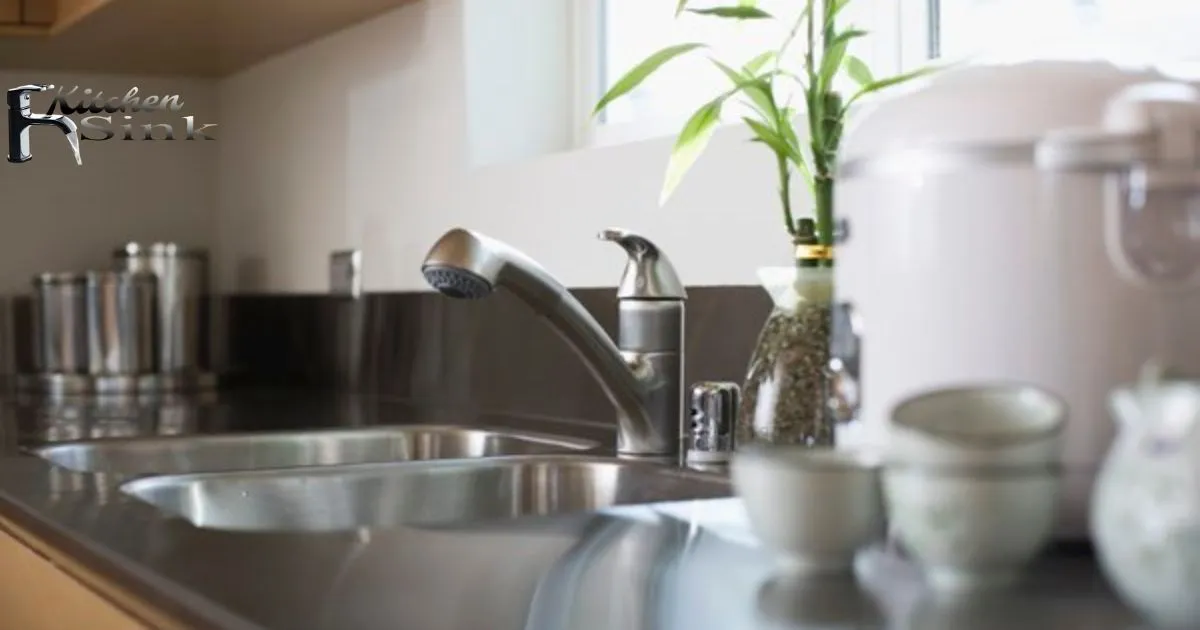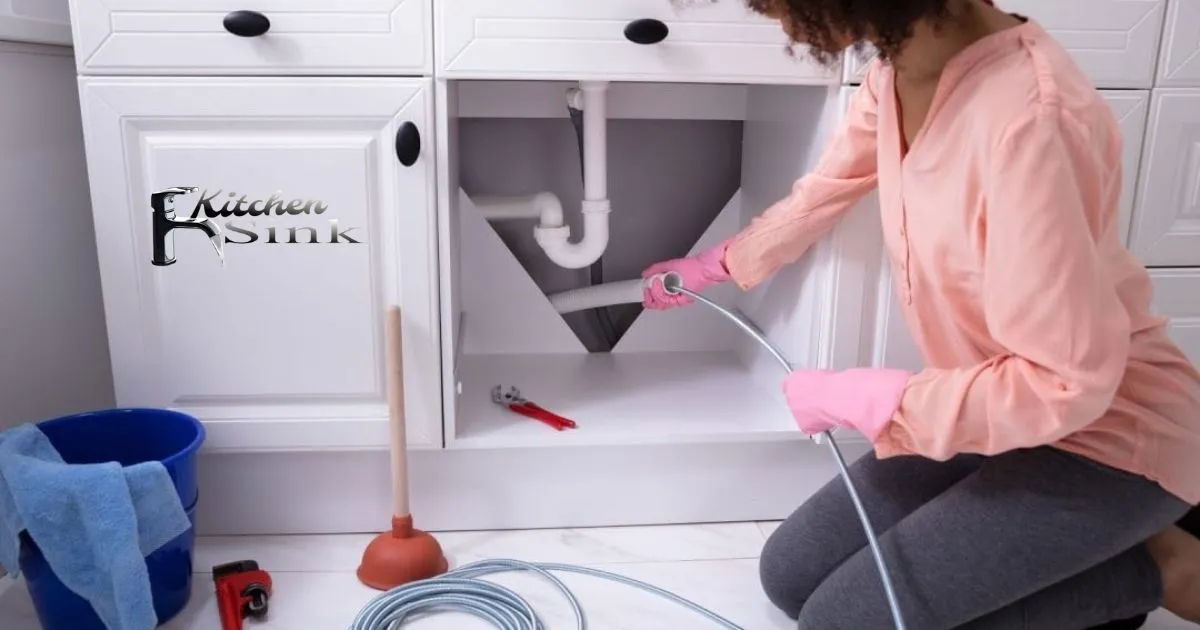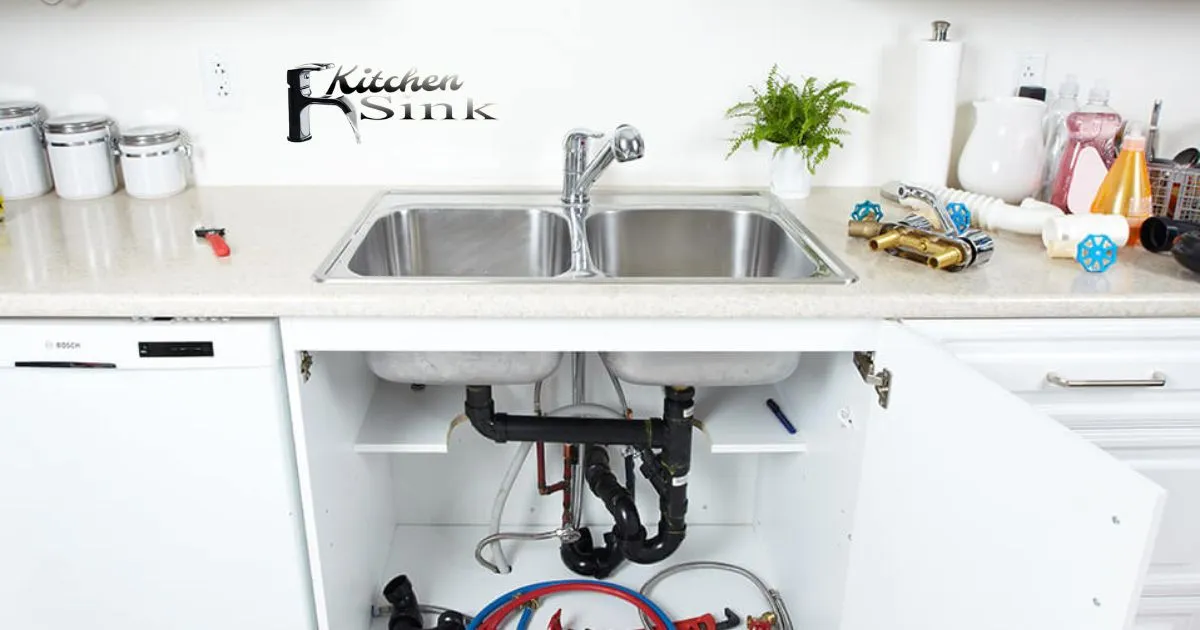When a kitchen sink backs up, it means that water is unable to properly drain down the pipes. This can happen for a variety of reasons, usually related to some kind of clog or blockage in the drain pipes. Common culprits for clogged drains include food, grease, hair, and other debris that makes its way down the sink. As more water tries to drain with nowhere to go, it begins to pool and back up in the sink.
Why is my kitchen sink backing up? This is a common question that many homeowners find themselves asking when they encounter problems with their kitchen drain. The gurgling sounds and pooling water are annoying and inconvenient. Getting to the root cause of the backup is key to figuring out how to unclog the drain and prevent future clogs from forming.
When water collects in the sink and won’t properly drain, it usually indicates a clog. Clogs can occur from food scraps, grease buildup, accumulations of hair and soap scum, or even roots growing into pipes. Using a plunger or drain snake to clear clogs is usually the first step. For recurring backups, installing screens over drains to catch food and hiring a professional plumber to inspect pipes may be needed.
Why is My Kitchen Sink Backing Up?
A backed up kitchen sink is often caused by a clog or partial blockage in the drain pipes. This prevents water and debris from properly flowing down the pipes. Common culprits for kitchen sink clogs include food scraps, grease, hair, and soap scum building up over time. A partial clog will slow water drainage while a severe blockage can lead to a completely backed up sink or overflow.
Causes a Clogged Kitchen Sink
There are a few common causes of clogged kitchen sinks. Allowing food scraps, coffee grounds, grease, and other debris to go down the drain builds up over time. Grease coats pipes while coffee grounds and small food particles collect to form clogs.
Hair and soap scum accumulate in pipes. Garbage disposals can worsen jams by not fully grinding food waste. Partial clogs happen slowly over time but can quickly turn into full blockages.
Unclog My Kitchen Sink Drain
First try a plunger to forcefully dislodge the clog. Pour baking soda and vinegar down the drain to react with the clog, then flush with hot water. Use a wire coat hanger or zip-it tool to hook debris. For severe clogs, use a chemical drain cleaner or call a plumber who has high powered augers to snake the drain and clear obstructions. Always run water while using your sink to prevent future clogs.
Plumber for My Clogged Kitchen Sink
Call a professional plumber if simple solutions like a plunger, drain snakes, or chemical drain cleaners fail to open the clogged kitchen sink. Plumbers have the expertise and tools to fully clear drain obstructions that accumulate from food, grease, hair, and other debris.
Persistent clogs needing a plumber may also indicate issues like pipe damage or a misaligned joint allowing debris to catch. Calling early for professional drain cleaning can prevent water damage too.
Preventative Measures Can I Take Against Future Kitchen Sink Clogs
Preventative measures include using mesh drain covers to catch food debris, avoiding pouring grease or oil down drains, limiting garbage disposal use, regularly snaking drains, and pouring hot water weekly to melt grease. Coffee grounds, egg shells, and fibrous produce can clog even garbage disposals. Maintaining good drainage habits keeps water flowing freely and prevents buildup on pipe walls over time.
Is Food Causing My Kitchen Sink to Clog?
Yes, food is a very common cause of kitchen sink clogs. Food items like grease, oil, coffee grounds, egg shells, and other food scraps can stick to the inside of pipes and accumulate over time, eventually blocking water flow and causing a clog. Food clogs are especially common in kitchen sinks because that is where most food prep and cleanup occurs.
Foods Commonly Clog Drains
Grease, oil, coffee grounds, egg shells, potato skins, rice, pasta, fruits and vegetable peels are some of the most common food items that clog kitchen sinks. These foods are thick, sticky, and don’t break down easily, allowing them to adhere to pipe walls. Over time they trap other debris too, growing the clog.
Food Get Trapped in My Kitchen Sink Pipes
Food gets trapped in sink pipes when it washes down the drain instead of being disposed of properly. Tiny particles of food can squeeze past the drain strainer and get stuck further down the pipe system. Grease and oils coat the insides of pipes as they flow down. All these food scraps then accumulate and block water flow.
Best Way to Remove Food Clogs from My Kitchen Sink
The best way to remove existing food clogs is by using a chemical drain cleaner or mechanical snake. Chemical cleaners use caustic substances to dissolve clogs, while snakes physically grab and pull out clogs. For prevention, routinely pour hot water to melt grease, use drain strainers, limit food in sinks, and collect grease/oil instead of pouring down sinks.
Prevent Food Clogs in My Kitchen Sink
To prevent food clogs, avoid putting grease, coffee grounds, egg shells and other problematic foods down the sink. Use drain strainers to catch food particles. Flush drains weekly with hot water to melt grease. Properly maintain garbage disposals. And collect oil/grease in containers instead of pouring down sinks.
Is My Kitchen Sink Vent Pipe Clogged?
A clogged kitchen sink vent pipe is a common cause of drain problems. Signs of a clogged vent include gurgling noises from the drain, slow draining water, foul odors coming from the drain, and water backing up.
If you notice any of these issues when using your kitchen sink, there is a good chance the vent connecting to the drain line is blocked and needs to be cleared.
Purpose of a Kitchen Sink Vent Pipe
The vent pipe for a kitchen sink serves an important purpose – it allows air to enter the drain system to prevent siphonage and back pressure. The vent works together with the P-trap to allow water to drain freely while also blocking sewer gases from entering the home.
In fact, a common issue many homeowners face is the phenomenon of My Kitchen Sink Gurgling, which often signifies a blockage or obstruction in the venting system. To maintain an efficient and smooth drainage process, it is essential to address and resolve any gurgling issues promptly, ensuring that the vent pipe remains free from any hindrances.
Kitchen Sink Vent is Clogged
Some clear signs your kitchen sink vent is clogged include water draining slowly or not at all, gurgling noises coming from the drain, foul sewer odors around the sink area, backup of water and debris, and leaking pipes.
If you notice any of these issues when running water in the kitchen sink, it likely indicates a blockage in the vent pipe that runs above the sink drain line. Checking for these symptoms can help diagnose if the vent needs to be cleared.
Problems Can a Clogged Kitchen Sink Vent Cause
5 problems a clogged kitchen sink vent can cause:
- Slow draining sinks and tubs. Without proper venting, water does not drain freely through the pipes.
- Gurgling sounds from drains. Built up pressure in the plumbing system can cause air bubbles and water to make loud noises as they try to escape through the pipes.
- Sewage smells inside your home. Gases and odors can leak into your home when vents are blocked.
- Water backing up in drains. With no place for air to escape, water can get pushed back up the drain pipes and overflow sinks or tubs.
- Expensive plumbing repairs. If left unaddressed, venting issues can lead to burst pipes, flooding, and damage to walls and floors.
Clear a Clog From My Kitchen Sink Vent
Some ways to clear clogs from a kitchen sink vent pipe include using a drain auger or plumber’s snake to remove debris, flushing the vent with a garden hose, or using vent cleaning products.
Calling a professional plumber is recommended if DIY attempts are not successful in unclogging the blocked vent pipe. They have the proper equipment and expertise to diagnose and clear difficult vent clogs. Taking steps to prevent future clogging is also advised, such as installing screens to keep out pests and debris.
Is There a Drainage Problem Behind My Kitchen Sink Wall?
If you are experiencing backups or slow drainage with your kitchen sink, there may very well be a drainage problem behind the wall. Common signs include standing water in the sink or dishwasher, gurgling sounds, foul odors coming from the drain, or water overflowing from the sink. These symptoms indicate a partial or full blockage in the drainage pipes that requires further inspection.
Drainage Issues Might Cause My Kitchen Sink to Backup
5 causes of kitchen sink backups in easy, short sentences:
- Food and grease clog the pipes. Gunk builds up over time. Things get stuck and water can’t drain.
- Small old pipes are too narrow. Bits of food and gunk pile up. Then the water backs up.
- No vent pipe. Air can’t get in. Water goes down slow. Things pile up and clog.
- Pipe slope is wrong. Pipes don’t angle down right. Water sits there. Gunk piles up.
- Garbage disposal jams. Big bits of food get stuck. The drain gets blocked. Water can’t get through.
Inspect My Kitchen Sink Drainage Pipes
You can attempt to inspect the kitchen sink drainage pipes yourself using a plumber’s snake or drain camera. A snake can help clear minor clogs. A drain camera, inserted through the drain or a disconnected pipe, lets you visually examine the pipes to identify obstructions. However, if you are uncomfortable doing this or unable to locate the problem, call a professional plumber to diagnose the issue.
Plumber Inspect My Kitchen Sink Drainage
At the first sign of a kitchen backup or slow drainage, contact a licensed plumber to inspect your pipes. A minor clog can quickly turn into a major problem if left unaddressed.
Catching drainage issues early allows for easier clearing of obstructions before they worsen or cause pipe damage. Routine maintenance checks by a plumber every 1-2 years can also help detect potential problems.
Long-Term Solutions Exist for Kitchen Sink Drainage Problems
For recurring kitchen sink drainage problems, several long-term solutions exist. The plumber may recommend hydro jetting services to thoroughly clean inside the pipes and remove stubborn buildup or obstructions.
Repiping may be suggested if the existing pipes are deteriorating, cracked, or improperly installed. In some cases, the plumber may advise rerouting certain sections of pipe prone to clogging. Installing screens over drains can also help catch debris before it enters and clogs pipes.
What Plumbing Issues Can Cause My Kitchen Sink to Clog?
The most common causes of kitchen sink clogs are putting the wrong items down the drain such as food waste, grease, and harsh chemicals. Food particles can accumulate over time and create blockages, while grease and oils solidify, stick to pipes, and restrict water flow.
Chemical cleaners can also react with other substances in pipes and cause clogs. Garbage disposals can fail to properly grind up some items like egg shells and fibrous vegetable peels leading to build up. Hair and soap residue from the dish washing process is another major contributor.
The best way to prevent clogs is to minimize pouring fats/oils down drains, use drain strainers, run water while using the disposal, and regularly pour hot water down the drain to clear grease.
Might Incorrect Plumbing Slope Affect My Kitchen Sink
If the plumbing leading from the kitchen sink does not have enough slope or grade, it can cause drainage issues. Plumbing code requires drain pipes to slope 1/4 inch per foot to allow wastewater to flow freely by gravity. Without proper slope, water can pool, solid particles settle out, and clogs accumulate more readily.
In addition to clogs, improper slope can also lead to foul odors coming back up the drain as solids decay. Fixing improper slope requires replumbing drain lines which can be invasive and costly. Using mechanical means like an air gap device can help improve drainage issues due to bad slope. But addressing underlying slope problems is the best long term solution.
Pipe Size Issues Cause My Kitchen Sink to Backup
Pipe size matters. Small pipes clog more. Kitchen sinks need big pipes. Old houses have small pipes.
Food and grease get stuck. Hair and gunk build up too. Small pipes can’t handle it. Things pile up and water can’t drain.
Then the sink backs up. Water fills the sink. The water has nowhere to go. Everything stops up.
Bigger pipes help. New pipe fixes it best. Or open walls to replace pipe. Got to make the kitchen pipes big enough.
Here is a table comparing pipe sizes:
| Pipe Size | Risk of Clog | Risk of Backup |
| 1.25 inches | High | High |
| 1.5 inches | Medium | Medium |
| 2 inches | Low | Low |
Role Does Venting Play in Kitchen Sink Drainage
Proper venting allows air to enter drain pipes and helps wastewater flow freely towards the main sewer line. Without venting, a vacuum can form as water leaves the drain. This vacuum can slow drainage and even siphon water out of sink traps allowing sewer gases to enter the home. Kitchen sinks utilize direct venting tied into the drain line itself, or connect to vent stacks that service other fixtures.
If slow drainage is occurring with gurgling sounds, there may be a vent blockage. Clearing debris from roof vents or snaking vent pipes inside walls can restore proper function. Upgrading from undersized vents to 4 inch minimum size may also be needed in some homes.
Plumber Diagnose Kitchen Sink Plumbing Issues
The first step a plumber should take is to visually inspect the sink, pipes, and traps for any sign of cracks, leaks or deterioration. Then they can attempt to run water and diagnose flow. If slow drainage is occurring, they should cable the drain line to clear any clogs, and use a camera to check for cracks or offsets. Checking venting connections is also important to rule out any vacuum issues.
Finally, confirming adequate slope per code requirements can identify any low spots or bellies that allow debris and water to accumulate. If necessary, a plumber may conduct a dye test by flooding water down a clean drain and checking for leaks underneath. Addressing any underlying issues discovered after thorough diagnosis helps prevent future problems.
Frequently Asked Question
Could a clogged pipe cause my kitchen sink to back up?
Yes, accumulated food waste, hair, and grease are common causes of partial clogs that slow drainage and cause water to back up into the sink.
Can my dishwasher cause my kitchen sink to back up?
A powerful dishwasher can overwhelm old pipes and cause water to back up from the shared drain into the kitchen sink.
Could my washing machine be connected to my clogged kitchen sink?
If your washing machine drain connects to the kitchen sink drain line, it could contribute to backups from excess water flow overwhelming the pipes.
Why does my kitchen sink gurgle when it’s backing up?
The gurgling noise occurs when air and water try to squeeze through a partially clogged drain line before the sink backs up.
Should I call a plumber for a backed up kitchen sink?
Yes, a plumber can diagnose the exact cause and location of the blockage and use professional drain cleaning tools to fully clear kitchen sink backups.
Conclusion
There are several potential causes for a kitchen sink backing up. The most common reasons are clogged drains from food waste, grease buildup, or foreign objects getting stuck. Issues with pipe slope or undersized pipes can also lead to backups by allowing debris to accumulate. Lack of proper venting causes water to drain slowly and can siphon water out of traps.
Diagnosing the specific reasons a kitchen sink is backing up relies on a combination of visual inspection, cabling, and camera checks. A plumber should start by confirming adequate slope and venting before addressing any clogs present.
Sometimes re-plumbing or upgrades are needed, but often a thorough cleaning and establishing better disposal habits can prevent future backups. Addressing underlying causes, not just temporarily relieving symptoms, is key to solving why is my kitchen sink backing up.



